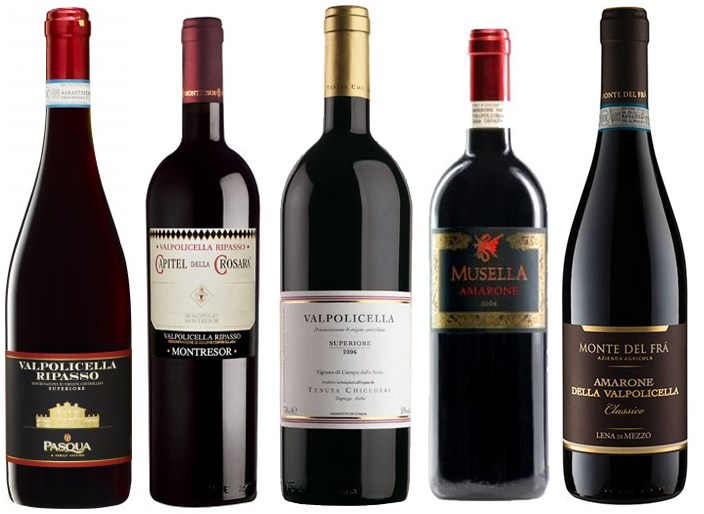Five days in Italy? I won’t even try to convince you that it was work or gain your sympathy for the brutal jet lag. I was there and back in a flash but the taste still lingers.
The occasion was Anteprima Amarone, for the 2011 release of this iconic wine. Amarone fans will be anticipating the arrival of this highly touted year. However, as the vintage is a long way from making it to BC, I scoured the shelves for something to drink in the meantime.
Amarone is a unique style of wine from the Valpolicella zone of the Veneto region in northeastern Italy. Regular Valpolicella is made from Corvina, Corvinone and Rondinella with a host of other equally exotic sounding grapes allowed. Most Vapolicella falls into the lighter bodied end of the red wine spectrum.
With sour cherry and bitter almond notes as well as bright acidity, it’s uncomplicated, affordable and highly chuggable. Try the Folonari for under $16 to get my drift.
Amarone is a selection of the same grape varieties that are (theoretically) grown in Valpolicella’s best sites. Before the grapes are crushed, they are left to dry for three to four months. This desiccation process is intrinsic to the wine’s character. Grapes lose well over a third of their weight, sugars are concentrated and flavours transform. The resulting wine is rich, full-bodied, and high in alcohol, often well over 14 per cent. Complex with distinct dried fruit flavours of fig and prune, Amarone seduces with appealing notes of chocolate, spice and coffee. This hedonistic wine is often far too opulent to pair with anything but a piece of Parmiggiano-Reggiano. The Italians call it a vino da meditazione; a meditation wine to savour slowly on its own. Post-yoga perhaps?
Amarone may seem worlds apart from basic Valpolicella. The price is equally disparate.
Sitting somewhere in the middle, both in style and price, is Ripasso. Essentially Valpolicella is passed over the unpressed skins of Amarone. The leftover sugar in the skins encourages a second fermentation that boosts the alcohol adding weight to the wine. Though closer to Valpolicella, a Ripasso will be fuller-bodied and should possess more than a hint of that dried fruit character you get in Amarone.
A word of warning with Amarone: you get what you pay for and it ain’t cheap. Expect to shell out at least $55 for a good one. If this is simply too extravagant for you, try a Ripasso. In general, they are half the price.
2012 Pasqua • Valpolicella Ripasso Superiore DOC • $21.99, BC Liquor Stores
Cherry compote, prune and violet potpourri with lingering sweet spice.
2011 Montresor, Capitel della Crosara • Valpolicella Ripasso DOC • $28-30, Private Wine Stores
Vanilla and dried red berries are balanced by earthy tobacco and pepper notes. Finishes with warming alcohol.
2010 Tenuta Chiccheri • Valpolicella Ripasso Superiore DOC • $38.99, BC Liquor Stores
Top-notch Ripasso! Fragrant and savoury, it brings me right back to Valpolicella. Liquorice, smoke and black plum with a deft balance of richness and freshness.
2009 Musella • Amarone della Valpolicella DOCG • $59.99, BC Liquor Stores
In the world of Amarone, this excellent value. Floral and pepper nuances add intriguing to black cherry, prune and leathery notes. Their Ripasso for $30 is also fabulous.
2007 Monte del Frá, Tenuta Lena di Mezzo • Amarone della Valpolicella Classico DOC • $79.99, BC Liquor Stores
This is big splurge but it’s Valentine’s Day on Saturday, right? Voluptuous, mouth caressing tannin and layers of fruit. Think fig, chocolate and dried sweet herbs. Made for sipping while curled up next to the fireplace.



